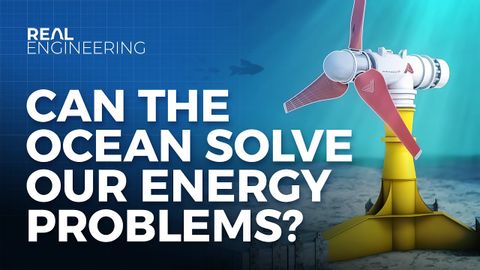Can Underwater Turbines Solve Our Energy Problems?
joey joey が 2021 年 04 月 12 日 に投稿  この条件に一致する単語はありません
この条件に一致する単語はありませんUS /ɪnˈkrɛdəblɪ/
・
UK /ɪnˈkredəbli/
- adv.信じられないことに;信じられないほど;信じられないほど;驚くほど
US /sɪɡˈnɪfɪkənt/
・
UK /sɪgˈnɪfɪkənt/
US /ˈɛvɪdəns/
・
UK /'evɪdəns/
エネルギーを使用
すべての単語を解除
発音・解説・フィルター機能を解除

